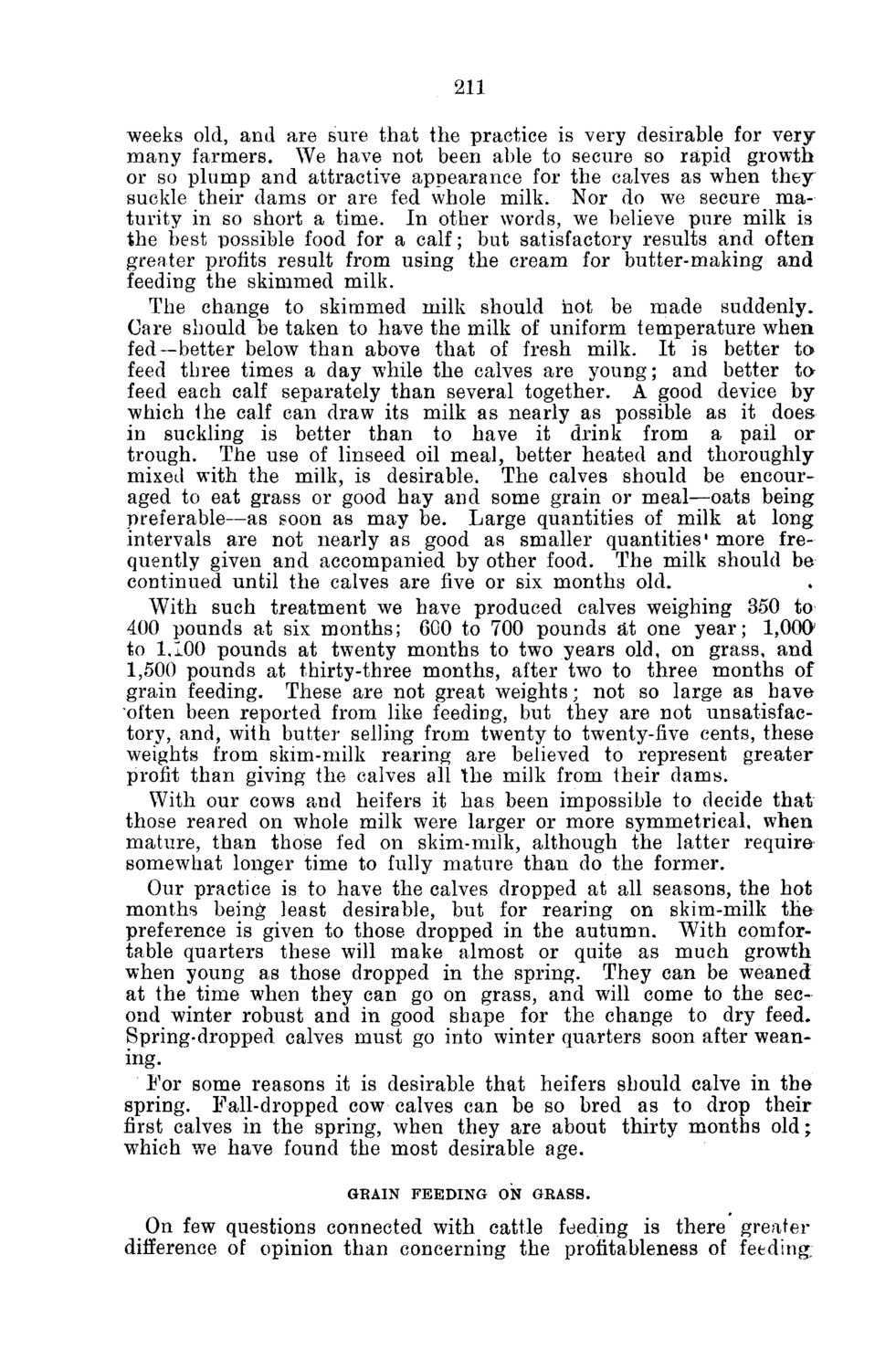| |
| |
Caption: Board of Trustees Minutes - 1886
This is a reduced-resolution page image for fast online browsing.

EXTRACTED TEXT FROM PAGE:
211 weeks old, and are sure that the practice is very desirable for very many farmers. We have not been able to secure so rapid growth or so plump and attractive appearance for the calves as when they suckle their dams or are fed whole milk. Nor do we secure maturity in so short a time. In other words, we believe pure milk is the best possible food for a calf; but satisfactory results and often greater profits result from using the cream for butter-making and feeding the skimmed milk. The change to skimmed milk should hot be made suddenly. Care should be taken to have the milk of uniform temperature whenfed—better below than above that of fresh milk. It is better to feed three times a day while the calves are young; and better t a feed each calf separately than several together. A good device by which the calf can draw its milk as nearly as possible as it does in suckling is better than to have it drink from a pail or trough. The use of linseed oil meal, better heated and thoroughly mixed with the milk, is desirable. The calves should be encouraged to eat grass or good hay and some grain or meal—oats being preferable—as soon as may be. Large quantities of milk at long intervals are not nearly as good as smaller quantities* more frequently given and accompanied by other food. The milk should be continued until the calves are five or six months old. With such treatment we have produced calves weighing 350 to 400 pounds at six months; 600 to 700 pounds &t one year; 1,000? to 1,100 pounds at twenty months to two years old, on grass, and 1,500 pounds at thirty-three months, after two to three months of grain feeding. These are not great weights; not so large as have often been reported from like feeding, but they are not unsatisfactory, and, with butter selling from twenty to twenty-five cents, these weights from skim-milk rearing are believed to represent greater profit than giving the calves all the milk from their dams. With our cows and heifers it has been impossible to decide that those reared on whole milk were larger or more symmetrical, when mature, than those fed on slum-milk, although the latter require somewhat longer time to fully mature than do the former. Our practice is to have the calves dropped at all seasons, the hot months bein£ least desirable, but for rearing on skim-milk the preference is given to those dropped in the autumn. W7ith comfortable quarters these will make almost or quite as much growth when young as those dropped in the spring. They can be weaned at the time when they can go on grass, and will come to the second winter robust and in good shape for the change to dry feed. Spring-dropped calves must go into winter quarters soon after weaning. For some reasons it is desirable that heifers should calve in the spring. Fall-dropped cow calves can be so bred as to drop their first calves in the spring, when they are about thirty months old; which we have found the most desirable age. GKAIN FEEDING ON GRASS. On few questions connected with cattle feeding is there greater difference of opinion than concerning the profitableness of feeding
| |